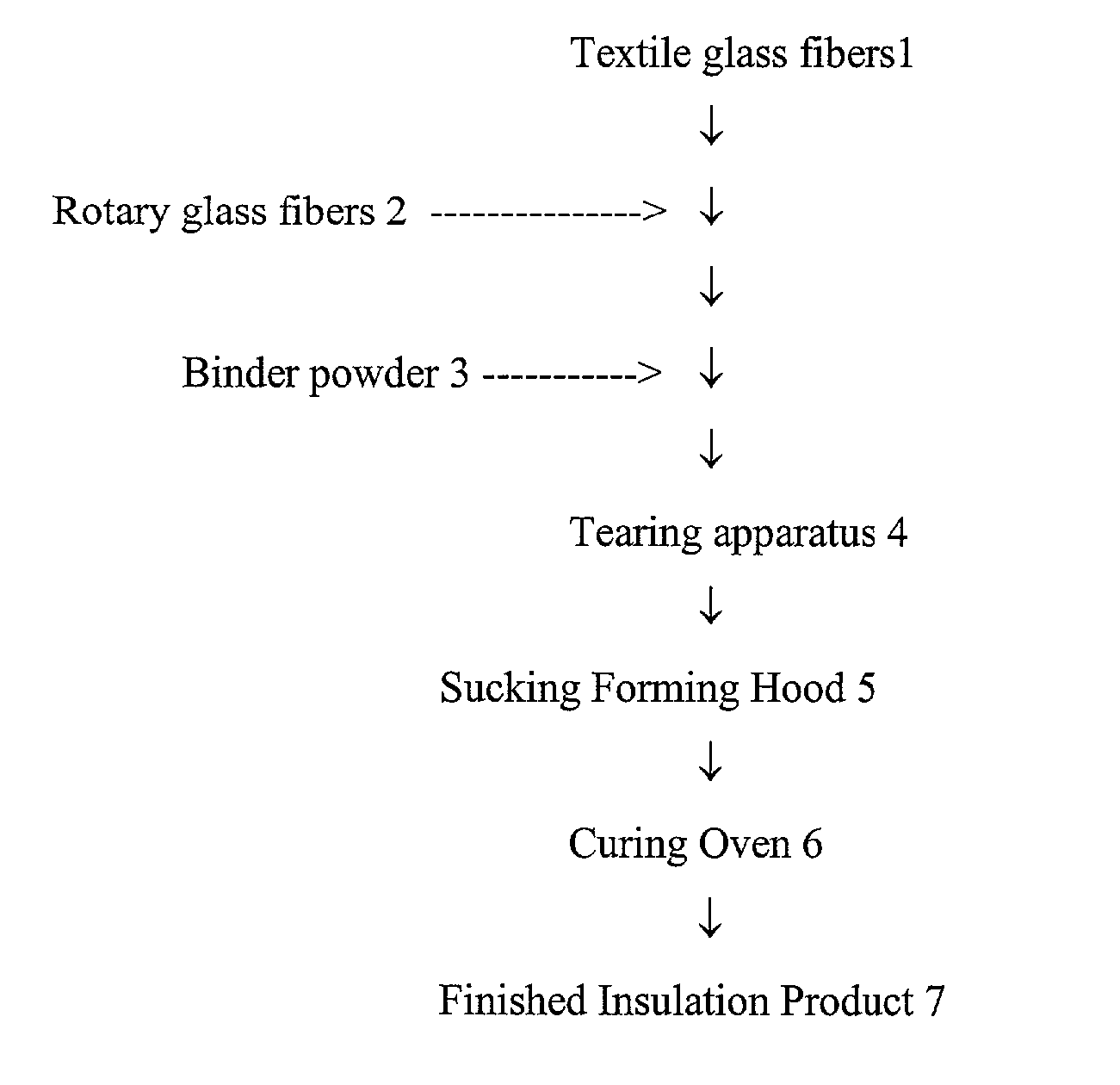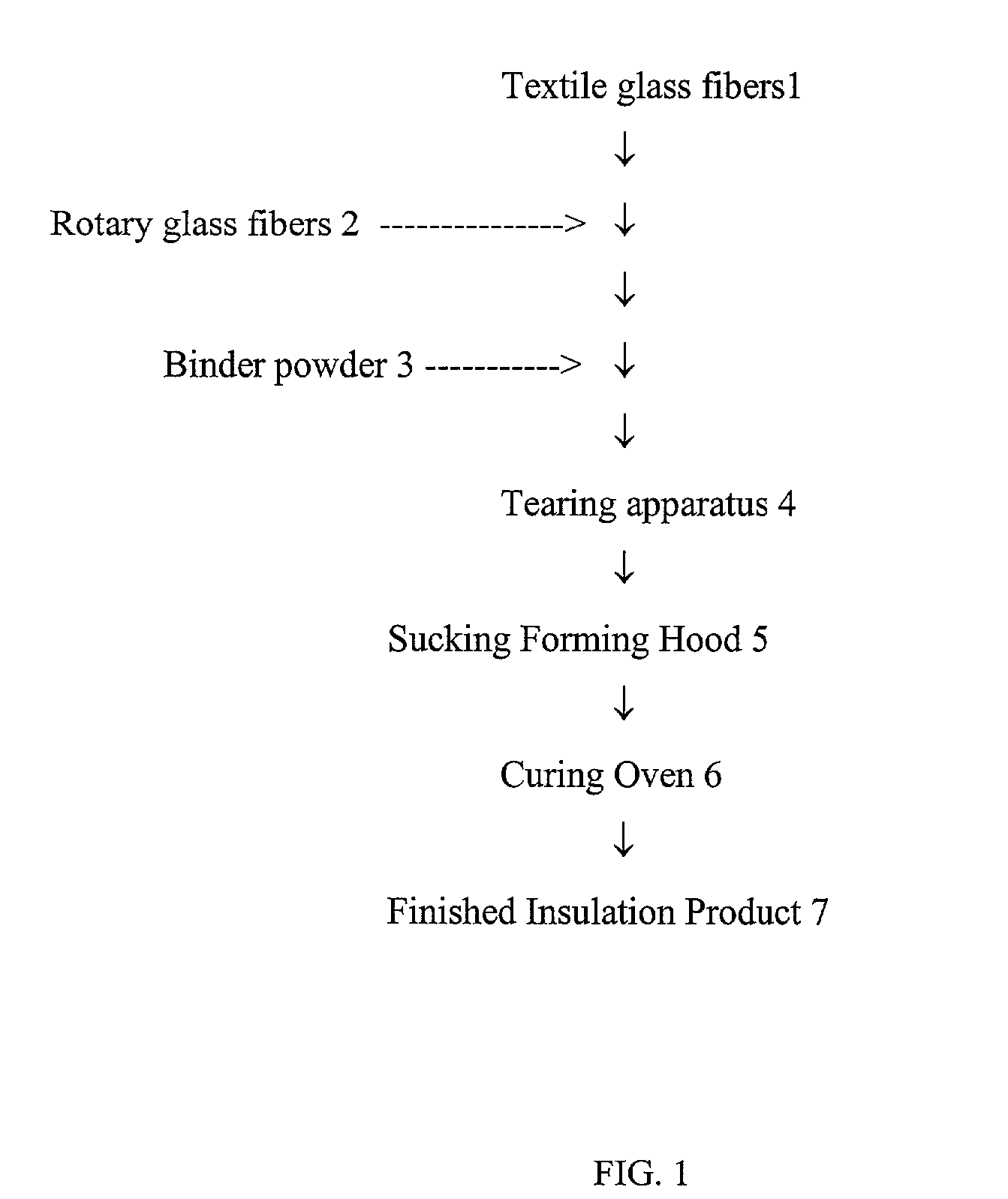Insulation containing a mixed layer of textile fibers and of rotary and/or flame attenuated fibers, and process for producing the same
- Summary
- Abstract
- Description
- Claims
- Application Information
AI Technical Summary
Problems solved by technology
Method used
Image
Examples
Embodiment Construction
[0025] The following non-limiting example will further illustrate the invention.
[0026] FIG. 1 illustrates various embodiments of the invention. A bale of textile glass fibers is opened (not shown) and opened textile glass fibers 1 are deposited onto a conveyor (not shown). A mat of rotary glass fibers 2 is combined with the opened textile glass fibers 1. A binder powder 3 is then added to the combined rotary and textile fibers. The rotary fibers 2, textile fibers 1 and binder powder 3 then enter a tearing apparatus 4 where the textile and the rotary glass fibers are divided into small segments and mixed together to form a mixture of short fibers. The mixture of short fibers, along with the binder powder 3, form a uniform rotary / textile fiber primary mat at the outlet of the sucking forming hood 5. When the primary mat passes through curing oven 6, the binder powder 3 flows to fix the fibers and form the finished insulation product 7.
[0027] Table 1 compares tested R-values (index of ...
PUM
| Property | Measurement | Unit |
|---|---|---|
| Length | aaaaa | aaaaa |
| Length | aaaaa | aaaaa |
| Length | aaaaa | aaaaa |
Abstract
Description
Claims
Application Information
 Login to View More
Login to View More - R&D
- Intellectual Property
- Life Sciences
- Materials
- Tech Scout
- Unparalleled Data Quality
- Higher Quality Content
- 60% Fewer Hallucinations
Browse by: Latest US Patents, China's latest patents, Technical Efficacy Thesaurus, Application Domain, Technology Topic, Popular Technical Reports.
© 2025 PatSnap. All rights reserved.Legal|Privacy policy|Modern Slavery Act Transparency Statement|Sitemap|About US| Contact US: help@patsnap.com


